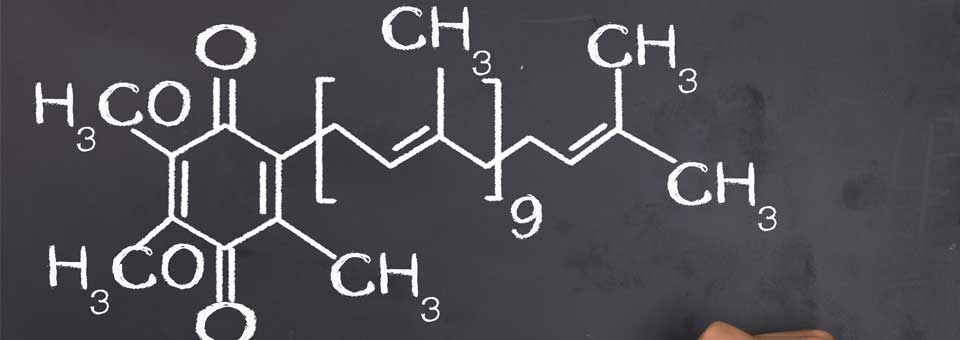
I made a prediction about the next frontier in anti-aging beauty.
I’m talking about mitochondria. The little organelles in each of your cells that are the source of energy for your whole body.
So far, most research has focused on what these little battery packs mean for your heart and brain. But they are also very important for understanding how your skin ages. And in a minute I’ll explain what you can do to slow down that aging process and even reverse it.
But first let me explain how low energy leads to skin aging.
In a recent study, researchers took skin samples from 27 people aged 6 to 72 years.1 They only took the samples from areas of the body that never get any sun. That way they could measure changes that just occurred because of age.
The researchers found that certain activity in the mitochondria significantly declined with age in the skin’s fibroblasts. Those are the cells that produce collagen and elastin.2
Your skin’s whole structural support depends on collagen and elastin. They make your skin smooth and wrinkle-free.
So as mitochondria in the fibroblasts slow down, your skin’s support system becomes lax. Your skin looks tired and you start to see sags and wrinkles.
Also as you age, mitochondria build up junk — free radicals. Free radicals muck up the mitochondria with oxidative damage. And sadly, DNA in mitochondria doesn’t have the same repair mechanisms as other DNA in the cell. So the rate of DNA mutations in mitochondria is about 50 times higher than in other DNA.
That DNA damage in the mitochondria is another major cause of aging. As those mutations accumulate, energy output drops even more. That’s when you start seeing the signs of aging in your skin like fine lines and wrinkles, breakdown of collagen, and dry, thinning skin.
It will be years before most skin doctors realize the role mitochondria play in skin aging. But I help my patients regain the look of fresh young skin by boosting the energy output of the mitochondria in their skin cells and repairing DNA damage to their mitochondria.
You can do the same thing. Here are three nutrients you can use at home to energize your skin for a younger look.
PQQ and CoQ10 Energize Skin Cells. PQQ neutralizes free radicals that damage and kill off your mitochondria. PQQ works harder and protects you hundreds of times longer than other antioxidants.3 It also acts as a catalyst inside your cells helping you make new mitochondria to make even more energy.
CoQ10 squeezes more energy out of each of those new batteries. It sparks your old mitochondria to make more energy. And it acts as a potent antioxidant that soaks up free radicals.4
I recommend starting with 10 to 20 mg per day of PQQ. Take it with 50 mg of the ubiquinolform of CoQ10.
Vitamin B3 Extends the Life of Skin Cells. In your body, vitamin B3 (niacin) breaks down into a molecule called nicotinamide adenine dinucleotide (NAD+). NAD+ is found in every cell in the body. It helps transfer energy from the foods we eat to the mitochondria. There it gets converted to cellular energy.5
As NAD+ levels dip with age, mitochondria don’t work as well. Increasing your levels of NAD+ can help increase energy.
The best food sources of niacin are grass-fed beef and organ meats, pastured eggs, chicken and turkey, and wild-caught salmon and tuna. Good vegetarian sources include peanuts, beets, leafy greens, nuts, peas and beans.
But for the anti-aging benefits to your mitochondria, you’ll have to supplement. Look for B3 in the form of niacin, niacinamide, or nicotinamide. Start with a low dose around 250 mg because B3 can cause a prickly skin reaction until you build up tolerance. It’s harmless but annoying. Work your way up to 750 to 1,000 mg a day.
You can also look for serums that contain niacinamide to apply directly to your skin. Make sure any product you buy has at least 5% niacinamide. You should see results in four to six weeks.
To Your Good Health,
![]()
Al Sears, MD, CNS
1. Amy Bowman, Mark A. Birch-Machin. “Age-Dependent Decrease of Mitochondrial Complex II Activity in Human Skin Fibroblasts.”Journal of Investigative Dermatology, 2016 May;136(5):912-9.
2. Slominski A, Pisarchik A, Zbytek B, Tobin DJ, Kauser S, Wortsman J. “Functional activity of serotoninergic and melatoninergic systems expressed in the skin.” J Cell Physiol. 2003 Jul;196(1):144-53.
3. Rucker R, Chowanadisai W, Nakano M. “Potential Physiological Importance of Pyrroloquinoline Quinone.” Alternative Medicine Review 2009;Volume 14, Number 3.
4. Prahl S, Kueper T, Biernoth, et al. “Aging skin is functionally anaerobic: Importance of coenzyme Q10 for anti aging skin care.”Biofactors. 2008;32(1-4):245-255.
5. Gariani K, Menzies KJ, Ryu D, et al. “Eliciting the mitochondrial unfolded protein response via NAD repletion reverses fatty liver disease.” Hepatology. 2016;63(4):1190-204.








